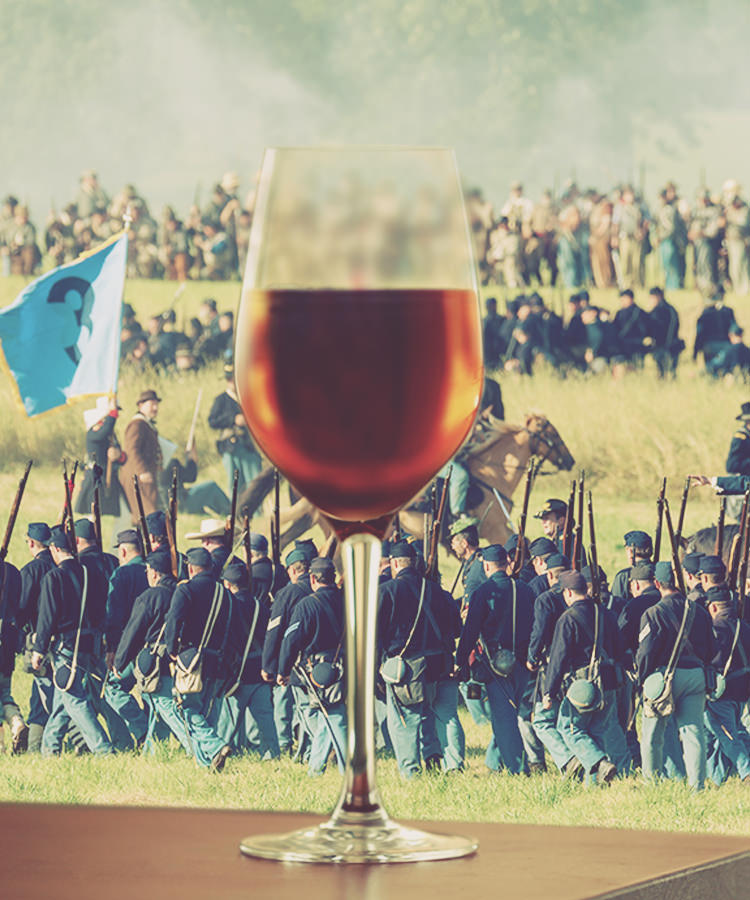On July 21, 1861, Union troops from the United States Army confronted battalions of rebels from the southern states in the First Battle of Bull Run. It was expected to be a quick battle, simply fought to quell the uprising from the states that had seceded from the Union.
People did know it was a historic moment, though. So onlookers followed the troops some 25 miles southwest of Washington, D.C., to watch history take place, picnic baskets and wine in hand. Matthew Brady, the famed Civil War photographer, is rumored to be one of the picnickers. “Carriages and wagons parked on the fringes of the battlefield from which picnickers of both sexes sallied forth to spread tablecloths on the ground and while away the day devouring not only reports from the front but also grapes, sweetmeats, and wine,” Edward Longacre writes in his book “The Early Morning of War: Bull Run, 1861.”
These spectators didn’t realize that the Battle of Bull Run was to be the first example of the awful battles that would define the bloodiest war in American history. The battle, which was also known as the First Battle of Manassas, was filled with blood, gore, and a next level of violence. Around 18,000 men and boys — many of whom had little to no training — clashed on the battlefield. Confederate troops slaughtered the Union soldiers, and the civilians who had brought their food and drink saw what war is really like.
The image of a horde of spectators drinking wine while boys murdered each other on a battlefield became notorious. The presses at the time had a heyday with the news. Shortly after the battle, the Boston Herald printed a poem about the voyeuristic viewers:
Have you heard of the story so lacking in glory,
About the Civilians who went to the fight,
With everything handy, from sandwich to brandy, To fill their broad stomachs and make them all tight.There were bulls from our State street, and cattle from Wall street,
And members of Congress, to see the great fun;
Newspaper reporters (some regular shorters)
On a beautiful Sunday went out to Bull Run.
A bit harsh, considering that, as Longacre notes, the spectators came to witness history in the making, and “brought food only because they could not expect to procure it on the battlefield.”
But the Civil War spectators are hardly alone in their macabre picnicking. Partying at battle sites has been happening all throughout human history. And though it sounds awful, there’s actually science to help us understand how humans can celebrate so proximate to the suffering of others.
It’s actually ingrained into human nature, according to a study conducted by the Washington Post and researchers at MIT and published in the Journal of Experimental Social Psychology. The study found that people can enjoy themselves while watching others suffer because of societal grouping. Humans put each other into camps of “us” versus “them” in a war. We empathize less with the “them” group, and we can even experience pleasure from seeing the “other” suffer.
Still, watching the other suffer (or believing you’re about to watch the other suffer, like in the case of the Battle of Bull Run) with refreshments seems to add a new layer of cruelty and apathy — an apathy somehow on a different level from the one people experience today while watching the impact of war through our screens.
